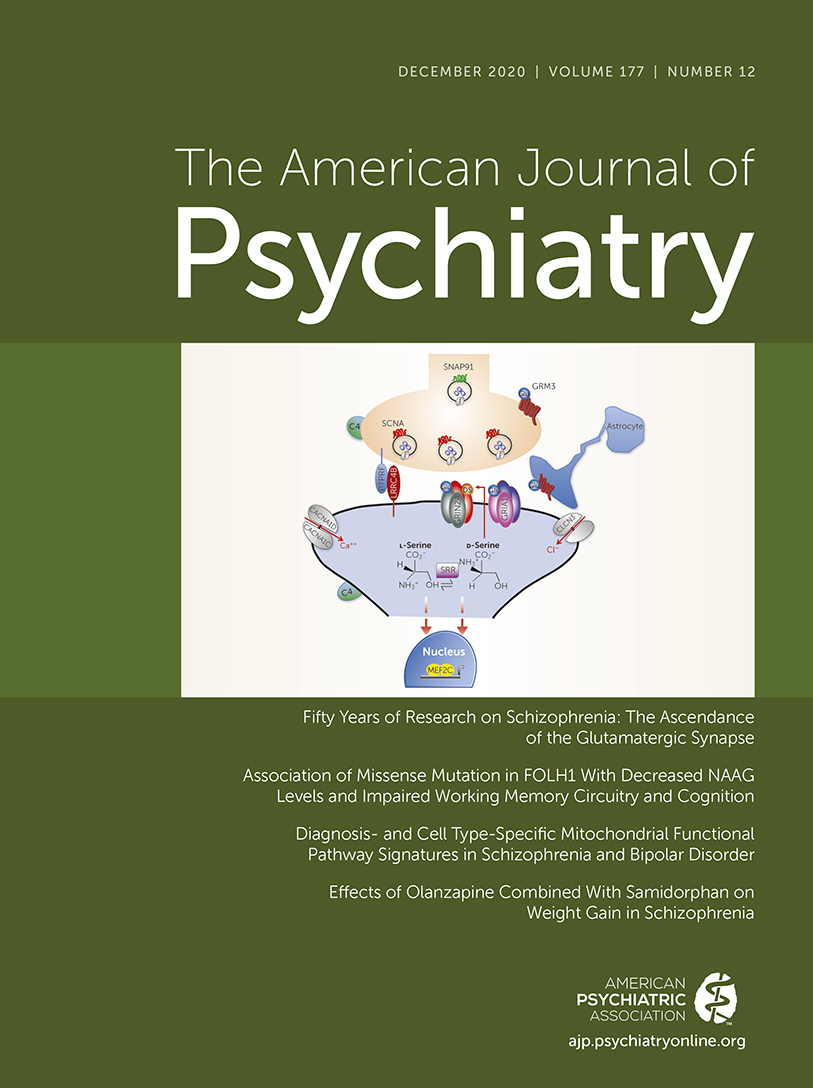Duration of Untreated Psychosis: Getting Both the Timing and the Sample Right
To the Editor: In the April 2020 issue of the Journal, Jonas et al. (1) reported long-term data on a subgroup from the Suffolk County Mental Health Project naturalistic first-episode psychosis study. In a novel analysis, the duration of untreated psychosis (DUP) predicted trajectory of functioning relative to onset of treatment, consistent with most previous analyses of the effect of DUP (2). Crucially, however, DUP was not predictive when trajectories were defined relative to onset of psychosis. If these results were to generalize to other samples, they would have important implications for early intervention both for the first-episode psychosis and the clinical high-risk paradigms.
We note two reasons, however, that the Jonas et al. findings are unlikely to generalize to other populations. First, the authors limited analyses to the 287 of 628 patients with first-episode psychosis (45.7%) who received schizophrenia spectrum diagnoses at last observation. This post hoc exclusion very likely removed many patients with first-episode psychosis with better functional outcomes, many of whom likely had shorter DUPs, thus biasing the analysis toward the null by design. Indeed, in earlier analyses of this same cohort, the schizophrenia spectrum subgroup of first-episode psychosis patients showed both poorer outcome and longer DUP (3). Second, as described in the accompanying editorial (4), the concept of DUP itself makes most sense when patients receive adequate treatment after the end of the untreated period. Unfortunately, this did not happen here. As the authors note, treatment in this cohort was “intermittent and inconsistent.” Viewing the Suffolk County sample as atypical is further supported by a 2005 meta-analysis, in which it was one of only two (from a total of eight) samples not to show a significant effect of DUP on functioning and one of only two (from a total of 14) samples not to show a significant effect on positive symptoms (2).
Jonas et al. have done a conceptual service in pointing out that the association between DUP and illness course can potentially be affected by when the predicted course is selected to begin. We agree that if treatment delay is a modifiable risk factor for outcome, it should predict course relative to psychosis onset as well as course relative to treatment onset. The Jonas et al. sample for testing this possibility, however, is not fit for this purpose. The authors state that their findings require replication, and we agree strongly: their findings should have no policy implications until the DUP prediction of course relative to psychosis onset is investigated in other samples.
1 : Lead-time bias confounds association between duration of untreated psychosis and illness course in schizophrenia. Am J Psychiatry 2020; 177:327–334Link, Google Scholar
2 : Relationship between duration of untreated psychosis and outcome in first-episode schizophrenia: a critical review and meta-analysis. Am J Psychiatry 2005; 162:1785–1804Link, Google Scholar
3 : Is there an association between duration of untreated psychosis and 24-month clinical outcome in a first-admission series? Am J Psychiatry 2000; 157:60–66Link, Google Scholar
4 : Does early intervention improve the long-term course of schizophrenia? (editorial). Am J Psychiatry 2020; 177:288–290Link, Google Scholar



